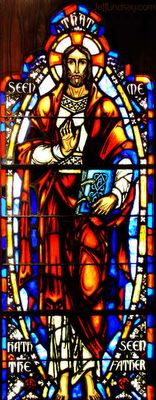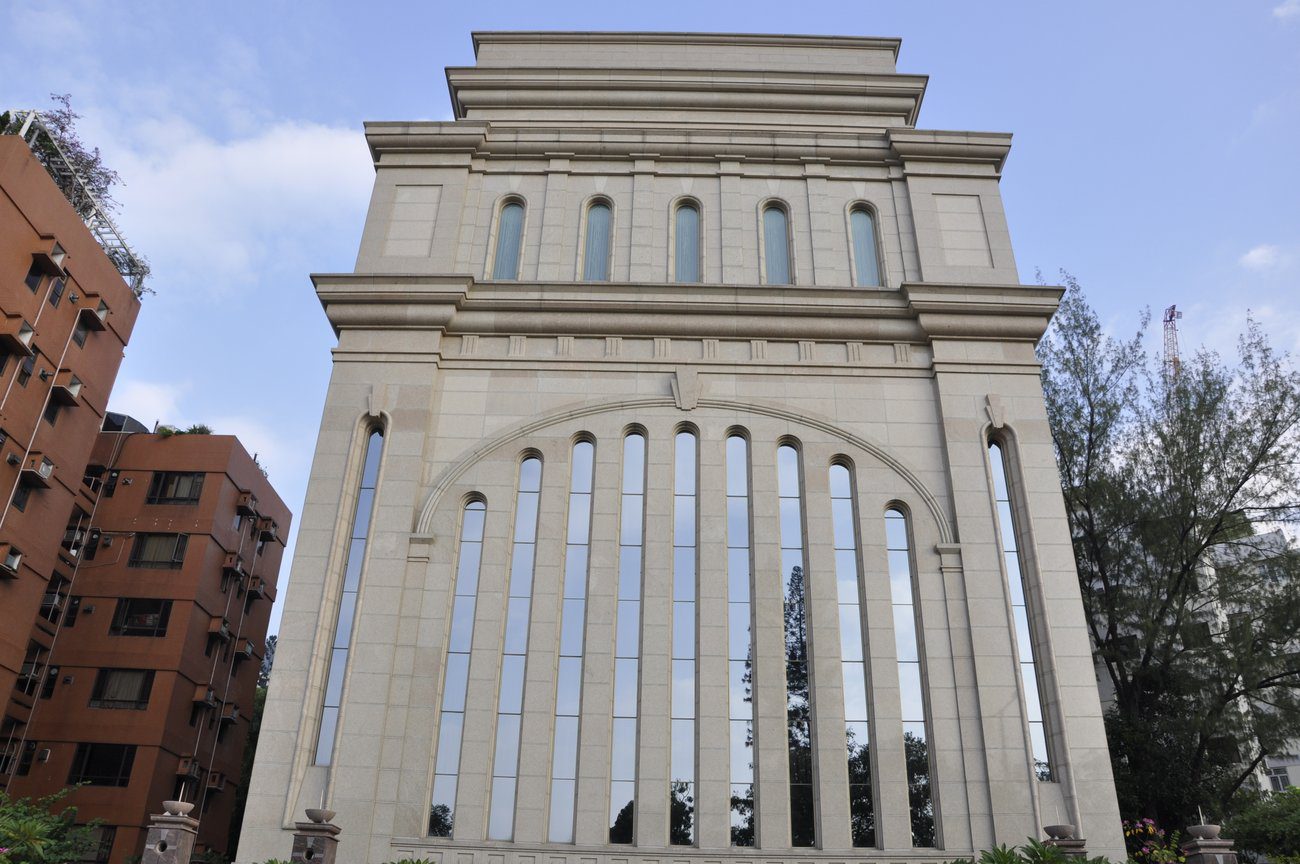
“He that hath seen me hath seen the Father.” This simple statement by Christ in John 14:9 was surely not meant to tell us that Christ is the same person or being as the Father, for Christ prayed to the Father, sought to do not His own will but the Father’s, said that His Father was greater than He (John 14:28), ascended after His Resurrection to return to His Father, called His Father His God (John 20:17), and was later seen standing at the right hand of the Father (Acts 7:55,56). No, what Christ surely meant was the same concept that Paul conveys in Hebrews 1:3 when he states that Jesus is “the express image of his [the Father’s] person.” In other words, Christ is in the image of the Father and looks like Him, enough so that to see the Son is to see the Father, just as He is so one in mind and purpose with the Father that to know the Son is to know the Father (John 14:7).
Adam’s son, Seth, was said to be in the likeness and image of his father, Adam (Gen. 5:1-3), using the same words from Gen. 1:26,27 that tell us that we are physically created in the image and likeness of God, an unmistakable reference to the physical image. If the son of the first man, Adam, looked like his father, it should not strain our faith to know that the Son of the Ultimate Man and Father should look just like His Parent.
Christ was born with a physical body and was resurrected with that body, so real and tangible and in the same image as us that He could not only be recognized but handled and felt (Luke 24:36-43).
This stained glass window is my photograph of “Christ in Mandorla,” designed by Charles J. Connick Associates of Boston around 1920. (Mr. Connick was one of America’s best stained glass artists and sought to revive medieval stained glass styles from 13th century France.) The window was in the First Methodist Episcopal Church, 575 Washington Avenue, Gary, Indiana, which was abandoned and later destroyed in the late 1980s. I’m grateful this window was preserved. I photographed it in the Smith Museum of Stained Glass Windows in downtown Chicago, an 800-foot-long series of galleries in Navy Pier’s Festival Hall. It’s a great place and admission is free.
The term “Mandorla” refers to the almond-shaped intersection of two circles representing heaven and earth. He stands there as the Intercessor between both.










I’ve wondered if any of Mary’s DNA got through to Jesus. Some sons look exactly like their fathers, some don’t. I wonder if Jesus was being literal or figurative? I hope to find out one day
As a Catholic, I find this line of LDS apologetics puzzling.
In Catholic theology, the phrase “image and likeness” means that we, unique among God’s material creatures, have the dignity of personhood, and we are capable of giving completely of ourselves for the sake of others, which is what the persons of the Trinity do. The Father empties himself and gives of himself completely to the Son, and the Son in turn gives all of himself to the Father. This total love for the other that they express can also be expressed by human beings. That is how (in Catholic theology, and I think Orthodox and Protestants would agree) humans are created in the image of God. For Catholics, this is the image that matters.
And again, in Gen. 5:3, Seth inherits the likeness and image of Adam because he has Adam’s qualities, including this capacity of the total self-sacrifice of love. Why would Moses want to emphasize that Seth was born with a physical body like Adam’s, or that there was a close family resemblence? What would be the point?
You quote John 14:9 (“he that hath seen me hath seen the Father”) and you seem to say that Jesus is saying he bears a striking physical resemblence to his Father. Why is that important? It’s as if Philip had said, “Lord, shew us a photograph of the Father, and it sufficeth us.”
And what is Jesus’ proof that they had seen the Father in him? He is in the Father, and the Father is in him. The Father dwells in him. He doesn’t explain that when Mary conceived, the Father caused all the DNA in the embryo to exactly duplicate the Father’s own genes, and that’s why they’ve “seen” the Father. He points rather to his own nature and his works. They have seen the Father because they have witnessed Jesus’ character and the great things he has done.
I have a great deal of interest in and respect for the LDS, and I don’t mean this comment to be disparaging to Mormonism. I am only trying to suggest that Gen. 1:26-27 isn’t necessarily the apologetics slam dunk that some Mormons seem to think.
Thanks for the comment. I understand your tactfully made point, but please recognize that the interpretation is based on the paradigm of an incorporeal God and the centuries of arguments offered to overcome what is actually quite a different position in the scriptures – in my opinion, of course. The words in Gen. 1 are clearly talking about physical appearance. Man is fallen from grace and not naturally godlike that takes the miraculous work of the Atonement of Christ to help us become more fully like God.
And yes, when Christ says that to see Him is to see the Father, there is more to it than physical apperance, for to know Christ and to follow Christ it to also know and follow the Father. Christ is telling us how He represents the Father – but there are multiple levels of meaning in his words. Literally, He is saying that to see Him physically is to see the Father – but there are the other layers of meaning as well.
but please recognize that the interpretation is based on the paradigm of an incorporeal God and the centuries of arguments offered to overcome what is actually quite a different position in the scriptures – in my opinion, of course.
I don’t think this is an accurate characterization. It is not the case (if this is what you meant to imply) that Mormons always take the plain meaning of scripture, and other Christians are obliged to dodge the plain meaning because of their theologies.
It’s really an authority issue. Both the LDS and Catholic churches teach that one cannot understand the Bible unless one has the proper authority. They both interpret some passages in scripture in other than their physical meaning because of an overriding theology that shapes their worldview.
For example, in John 6, 1 Cor 11, and the Last Supper narratives in the synoptic Gospels, the Bible plainly teaches that communion involves the physical eating of the body of Christ. Catholics regard this (to use a Mormon expression) as a plain and precious truth, and one of the key aspects of the Gospel. Latter-day Saints, though, are obliged by their paradigm to come up with an unliteral interpretation.
Man is fallen from grace and not naturally godlike that takes the miraculous work of the Atonement of Christ to help us become more fully like God.
When you say “become more fully like God” do mean the same thing as “in the image of God” or do you mean something different? Are you saying that image refers to our physical resemblance, and likeness refers to our spiritual resemblance?
ok….but what about john 1:1- In th ebeginning was the Word, and the Word was with God, and the Word was God…..(scroll down to verse 14)And the Word was made flesh, and dwelt among us…*explain this* or what about Matthew 1:23_-…,and they shall call his name Emmanuel, which being interpreted is, God with us.